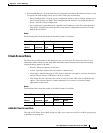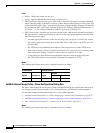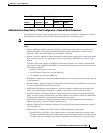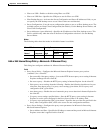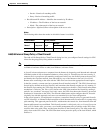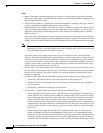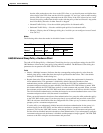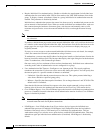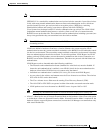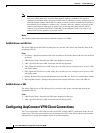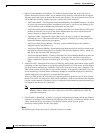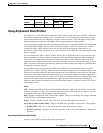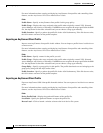
69-39
Cisco ASA 5500 Series Configuration Guide using ASDM
Chapter 69 General VPN Setup
ACL Manager
that the ASA pushes these rules down to the VPN client, so you should create and define these
rules relative to the VPN client, not the ASA. For example, “in” and “out” refer to traffic coming
into the VPN client or going outbound from the VPN client. If the VPN client also has a local
firewall, the policy pushed from the ASA works with the policy of the local firewall. Any packet
that is blocked by the rules of either firewall is dropped.
–
Inbound Traffic Policy—Lists the available push policies for inbound traffic.
–
Outbound Traffic Policy—Lists the available push policies for outbound traffic.
–
Manage—Displays the ACL Manager dialog box, in which you can configure Access Control
Lists (ACLs).
Modes
The following table shows the modes in which this feature is available:
Add/Edit Internal Group Policy > Hardware Client
The Add or Edit Group Policy > Hardware Client dialog box lets you configure settings for the VPN
3002 hardware client for the group policy being added or modified. The Hardware Client dialog box
parameters do not pertain to the ASA 5505 in client mode.
Fields
• Inherit—(Multiple instances) Indicates that the corresponding setting takes its value from the
default group policy, rather than from the explicit specifications that follow. This is the default
setting for all attributes in this dialog box.
• Require Interactive Client Authentication—Enables or disables the requirement for interactive
client authentication. This parameter is disabled by default. Interactive hardware client
authentication provides additional security by requiring the VPN 3002 to authenticate with a
username and password that you enter manually each time the VPN 3002 initiates a tunnel. With
this feature enabled, the VPN 3002 does not have a saved username and password. When you enter
the username and password, the VPN 3002 sends these credentials to the ASA to which it connects.
The ASA facilitates authentication, on either the internal or an external authentication server. If the
username and password are valid, the tunnel is established.
When you enable interactive hardware client authentication for a group, the ASA pushes that policy
to the VPN 3002s in the group. If you have previously set a username and password on the VPN
3002, the software deletes them from the configuration file. When you try to connect, the software
prompts you for a username and password.
If, on the ASA, you subsequently disable interactive hardware authentication for the group, it is
enabled locally on the VPN 3002s, and the software continues to prompt for a username and
password. This lets the VPN 3002 connect, even though it lacks a saved username and password,
and the ASA has disabled interactive hardware client authentication. If you subsequently configure
a username and password, the feature is disabled, and the prompt no longer appears. The VPN 3002
connects to the ASA using the saved username and password.
Firewall Mode Security Context
Routed Transparent Single
Multiple
Context System
• — • ——



